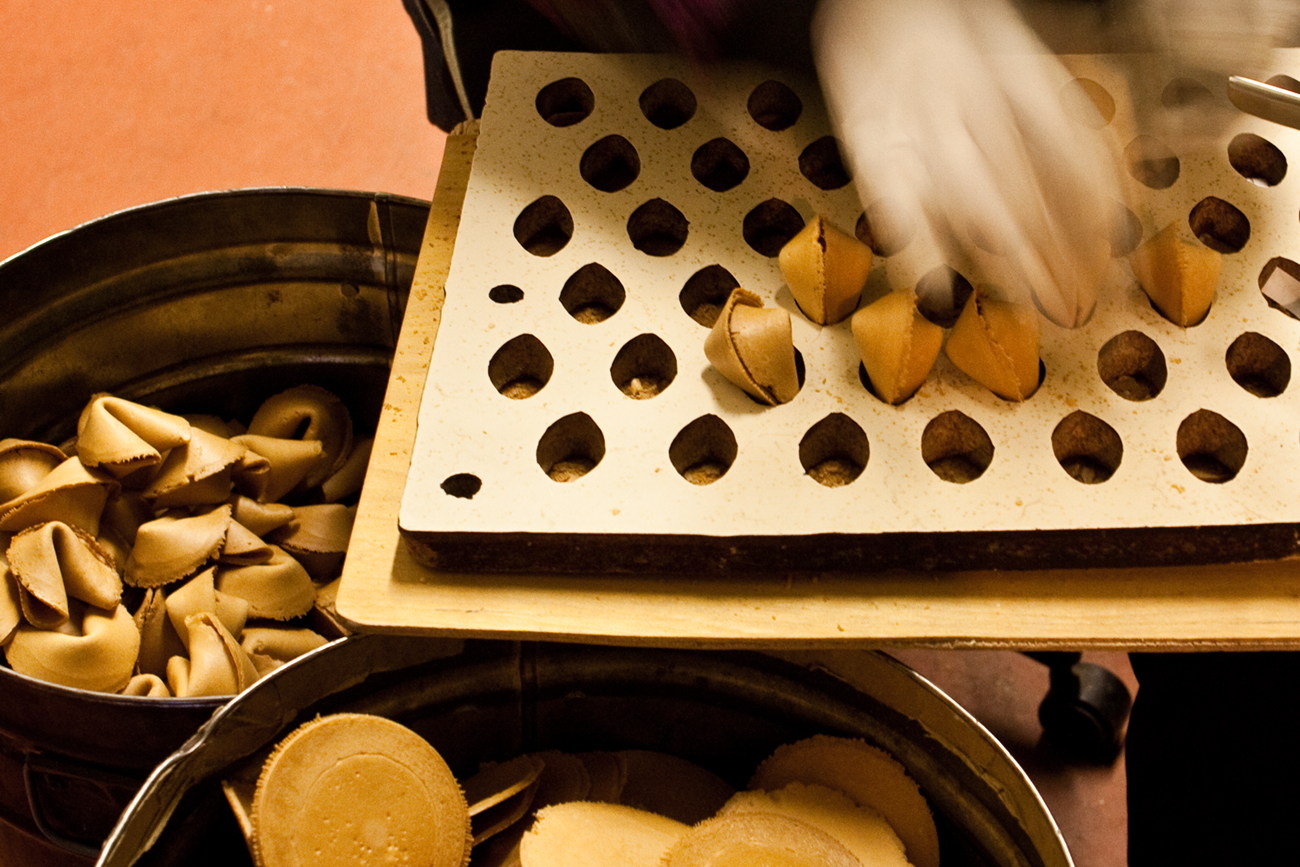
It’s sometimes easy to forget that our technologically complex world wasn’t created out of whole cloth. Or that it wasn’t always here. Without an awareness of the past, “the sense of time falls in upon itself,” writes Lewis Lapham, “collapsing like an accordion into the evangelical present.”
“Vintage Tech,” a new Believer column by B. Alexandra Szerlip, will examine some of the under-the-radar stories, personalities and techniques that inform our 21st century lives.
A number of years ago, I stuck my head into the back room of a small Chinese bakery where fortune cookies were being made. The machine, which occupied most of the dimly lit space, was a Rube Goldberg-slash-Terry Gilliam marvel patinated with age. Small metal discs descended like a wave of chorus girls’ legs. A hanging bucket fed into a copper spout that dropped a pre-measured circle of batter onto the discs which were warmed from below by individual blue gas flames.
Following a sedate oval rotation, the “cooked” circles were plucked off, one by one, by an elderly Chinese woman sporting a bowl hair cut. After dropping in a pastel slip of paper, she folded each still-pliable wafer — first in half one way, then in reverse — and set it, like a precious egg, onto a board of ovoid slots.
Four minutes from start to finish.
All this occurred under the scrutiny of the manager who, bedecked in bedroom slippers and a cardigan, shuffled around the tight space chewing on a cigar. The only sound was the soft whirring of gears.
“In a great modern factory, old machines are at once sent to the scrap pile as soon as a new patent is issued,” wrote Otis T. Mason in 1895 in his book Origins of Invention, “and whole chapters in the history of ingenuity have been torn up on the up-rearing of a new and more advanced culture.”
Not so for the fortune cookie machine!
Like my grandmother’s ever-reliable Singer, which predates Alfred Sloan’s “built-in obsolescence” credo, they were built to last. All the working machines in the San Francisco Bay Area, where both the cookie and the machine originated, are between fifty and sixty-seven years old. Think about it. They were cranking out confections back when Eisenhower was elected president and Salk’s polio vaccine was introduced; they were putting in long hours before the advent of national TV, Beatlemania, or the first manned space flight.
The cookies are not Chinese.
The Japanese had been making omikuji senbei (“written fortune crackers”) over coal-heated iron grills since the 1800s. Around the turn of the century, Makoto Hagiwara, a Japanese landscape designer...
You have reached your article limit
Sign up for a digital subscription and continue reading all new issues, plus our entire archives, for just $1.50/month.
Already a subscriber? Sign in




